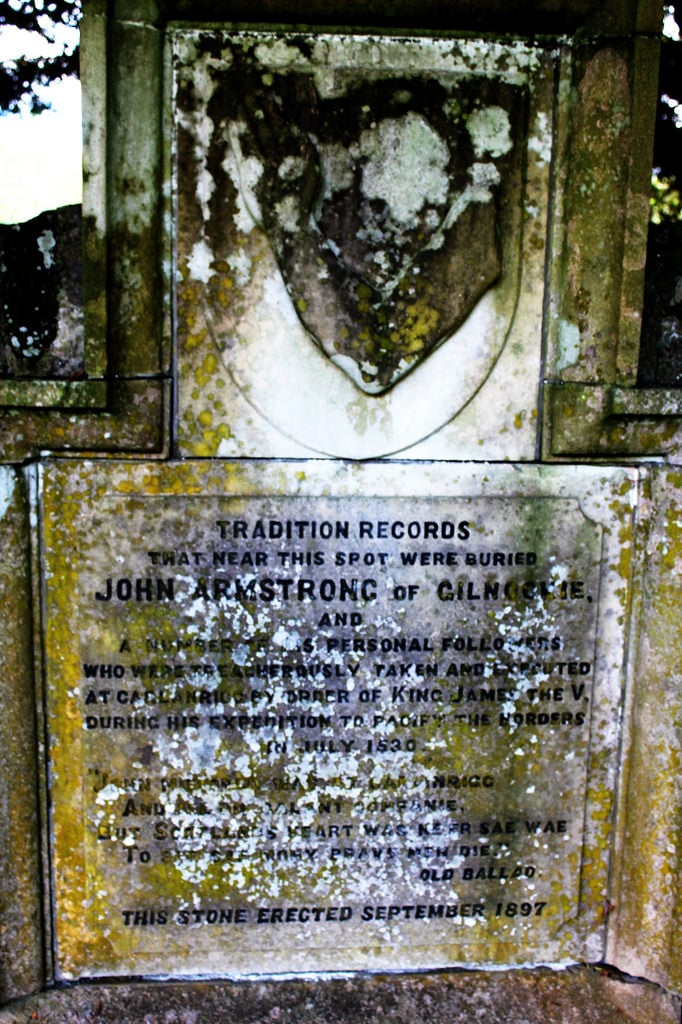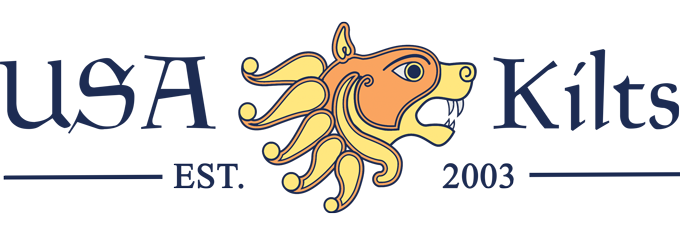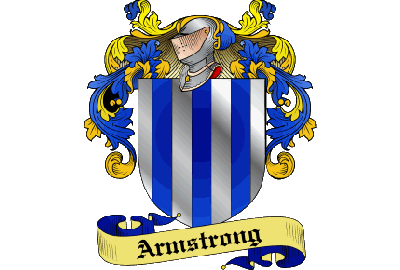CLAN ARMSTRONG - CREST, TARTAN & HISTORY
The Crest of Clan Armstrong is written in Heraldic parlance as "An arm from the shoulder, armed Proper."
Simply put, this means it is a man's right arm raised upwards. The term "proper" means the element is meant to be drawn in a naturalistic way or color as opposed to using abstract coloring (ie. a dog that looks like a real dog as opposed to a green-colored dog). In almost all cases, the arm in the Armstrong Crest is drawn wearing armor.
The Clan Armstrong Motto is Invictus maneo; Latin for “I remain unvanquished.”
The Armstrong Tartan first apeared in the Vestiarium Scotorum published by the Sobieski Stewarts in 1842.
The Armstrongs are an armigerous clan with roots in the Borders. They are counted among the so-called 'Devil's Dozen'; the firecest and most successful of the reiver clans. According to legend, the first of the Armstrongs was Siward Beorn (“sword warrior”) also known as Siward Digry (“sword strong arm”). Siward was the last Anglo-Danish Earl of Northumberland and a nephew of viking King Canute the Dane who ruled England until 1035. The family is also related by marriage to Duncan, King of Scots, and to William the Conqueror.
Accordning to legend, the first lands held by the Clan were orginally gifts presented to Siward after he used his incredible strength to rescue the King who had been trapped under his own horse in the midst of a battle. Armstrong became a common name throughout Northumbria and the Borders. The clan was traditionally based in Liddisdale and the debatable borderlands but expanded into the valleys of the Esk and Ewes. Around 1425, John, the brother of Armstrong of Mangerton, built a stronghold in Liddisdale. This was when the clan was at the peak of its power.
The Armstrongs supposedly could raise 3,000 horsemen which allowed them control over much of the debatable land around the 15th and 16th centuries. This power came to threaten King James V who, according to tradition, tricked John of Gilnockie into attending a parlee at Hawick. John was hanged. He is reputed to have said, “King Harry would downweigh my best horse with gold to know I were condemned to die this day.”
Later, the Armstrongs got a measure of revenge by failing to support James at the battle of Solway Moss in 1542.
In 1603, the Union of the Crowns ended the Anglo-Scottish border wars. This effectively ended Armstrong power in the region. After a failed cattle reiving raid on Penraith, the last laird of the Armstrongs was hanged. Soon after, a brutal campaign to subdue the Borders was engaged. Members of the clan scattered. Many clansmen fled to the Ulster province of Ireland, especially around County Fermanagh. Armstrong is now one of the fifty most common surnames in Ulster.
Armstrong lineage in the modern day is still proud and includes such notables as Sir Alexander Armstrong, the Arctic explorer and Neil Armstrong, the first man on the moon. The first gathering of Armstrongs for 400 years was held at Tourneyholm in Liddesdale in 1979. Though without a chief, the clan boasts an energetic Clan association with members around the globe.



